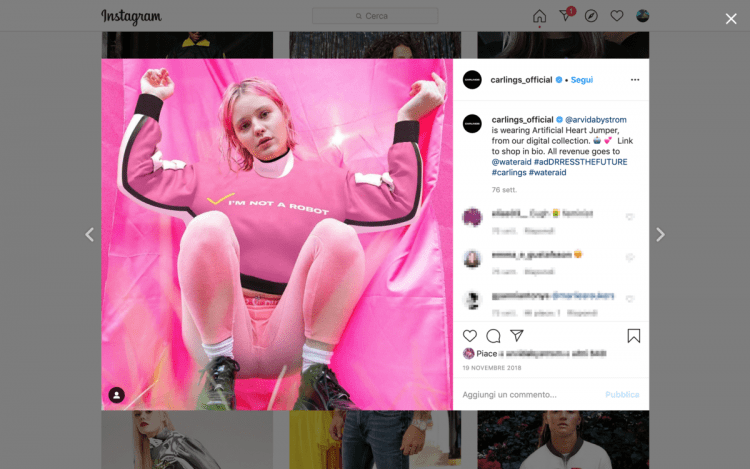Carlings DIGITAL CLOTHING COLLECTION Neo-ex
While Milano is launching the first Milano Digital Fashion Week (14-17 July 2020), fashion brands are in a real struggle. Renewing the sector is now vital to its survival. At this time, the $2.5tn global fashion industry risks one of the most worrying economic contractions in the world market.
By now, fashion shows are canceled, physical stores have been closed and it all led to a dramatic drop down of the demand for fashion goods; events start going online and fashion weeks are going “digital”.
For those who didn’t suspend the e-commerce orders, the online purchase is still working but the selling does not nearly compensate the physical store ones. Both fast-fashion chains and luxury brands are hit by different lockdown measures in the world. For example, H&M closed 3.441 of its 5.062 stores all over the world, Burberry's sales plunge 80%, and thousands of people are now unemployed.
“It’s a true emergency,” said Carlo Capasa, president of the Italian Chamber of Fashion. The consumers’ habits have been changing, even out of necessity, but the hope to overcome this period and gradually get back to normality is commonplace.
But what is normal?
Coronavirus emergency has pointed out some critical issues which have been hiding under the surface for a long time. For many countries, including Italy, the pandemic brought positive consequences like a services digitalization growth (for school, work, telecommunications) and has definitively thrown us into the digital age.
On the other hand, we can find the thorny side of a great industrial machine, which now suffers a sharp slowdown. This fact has inevitably drowned the attention on sustainability and bio-diversity changes that happened until now.
In particular, as reported from BBC, “the fashion industry accounts for about 10% of global carbon emissions, and nearly 20% of wastewater. And while the environmental impact of flying is now well known, fashion sucks up more energy than both aviation and shipping combined.” (United Nations study on climate change)
These are alarming data.
In the last decade, fashion has largely followed the Social over-consuming “trend”, indeed.
Does #ootd (outfit of the day) tell you any thing?
If we make a quick research on Instagram, 1.6m of posts are related to this hashtag. Strictly according to the definition of #ootd, the probability that the outfits have been dressed once by the posters/influencers is very high.
Compulsive purchasing, fast fashion consumption, the constant demand for new trends: these behaviors started a chain reaction that led to a significant and negative footprint on the world.
The attention to the above-mentioned relationship with disposable fashion is the starting point of the so-called “digital fashion”, a relatively new branch of industry referring to 3D-rendered garments that only exist virtually.
In may 2019, the dutch startup The Fabricant, the world’s first digital-only fashion house, sold for $ 9,500 a dress…that actually doesn’t exist. The purchaser was the businessman Richard Ma, who bought this particular gift to his wife.
But if the actual cost of the digital clothing revolution is this, a great percentage of people in the world could not even approach the novelty. So, the Scandinavian retailer Carlings took care of the issue, making the purchase process more affordable, and right now it has the potential to become a worldwide phenomenon.
In 2018, while Vivienne Westwood launched her motto “Buy Less, Buy Better” for the DIY-aesthetic unisex Spring Summer 2019 Collection "to save the planet and us”, Carlings released its first streetwear collection that directly speaks to digital natives. It sold out in a week.

 English
English 日本語
日本語


